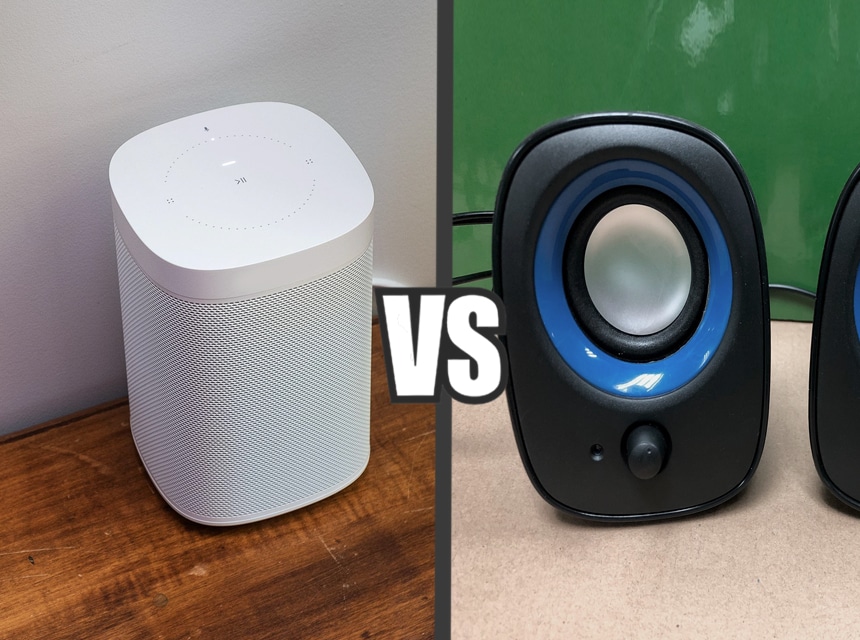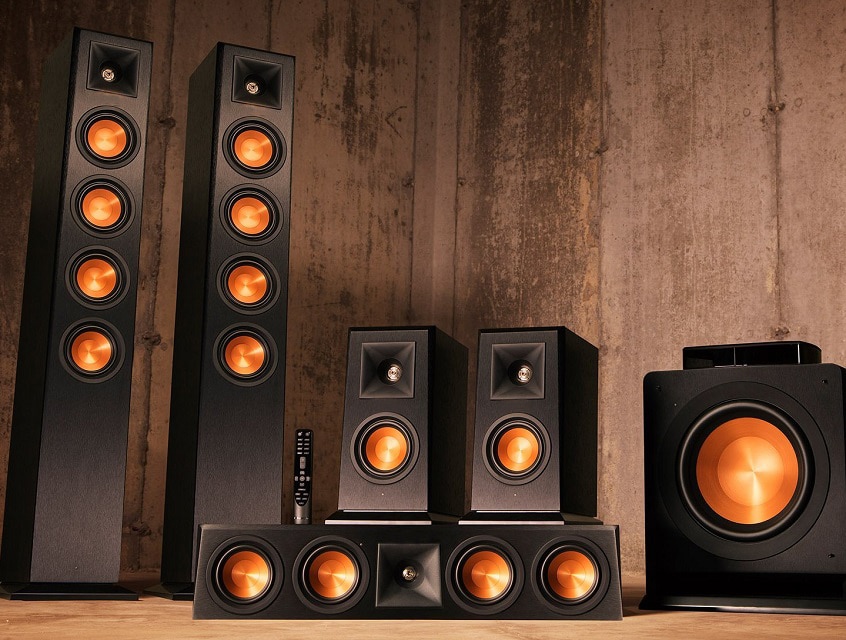With a properly set home theater system, you can enjoy audio-visual experiences that you will never forget. The challenge for most people, though, is getting the right components to set up the system. One of the questions that many users looking to set up their system ask is ‘which is better between the active and the passive subwoofer?’ In this active vs passive subwoofers comparison, we will see the major differences between the two. With this knowledge, you can determine which of them is better for your home theater system.
Subwoofers are speakers that are made to reproduce the lowest frequencies. Thus, they are a necessary component of the best home theater systems. It makes your music sound better, especially when it comes to acoustic and bass sounds. For movies, you get the background sounds with better clarity, thus enhancing your experience.
The active subwoofer is also referred to as the powered subwoofer. As an active subwoofer, it comes with a built-in amp and an independent power source—these models are pretty easy and straightforward to set up in a space.
They are called ‘active’ because they are self-contained. With the components designed to match the speaker’s performance, less power is used from the A/V receiver Trusted Source AV receiver - Wikipedia An audio/video receiver (AVR) is a consumer electronics component used in a home theater. Its purpose is to receive audio and video signals from a number of sources, and to process them and provide power amplifiers to drive loudspeakers and route the video to displays such as a television, monitor or video projector. Inputs may come from a satellite receiver, radio, DVD players, Blu-ray Disc players, VCRs or video game consoles, among others. The AVR source selection and settings such as volume, are typically set by a remote controller. en.wikipedia.org .
The build and design behind these subwoofers ensure that each of the components is optimized for the best performance. They work astride the speaker’s power requirements and are some of the best equipment if you want to have an unforgettable audio-visual experience.
So, when should you buy an active subwoofer? These models are especially useful when you are looking for the most power from your sound system.
The active subwoofer creates a deeper sound than the passive subwoofer. Sony is one of the world’s biggest companies, and its subwoofer is regarded as one of the best active subwoofers on the market.
One of the problems with subwoofers is inadequate power from the amplifier. However, you don’t have this problem with the powered or active subwoofer. As it optimizes each component, all the parts are in the same body and are matched evenly.
Another advantage, apart from the efficiency, is that you don’t go through plenty of fuss to set it up. It actually only needs one cable connection from a receiver or processor line output to get started. With this feature, the receiver’s power load is reduced while the mid-range and tweeter speakers of the system are enhanced.
Also, these subwoofers are very easy to use with most home theater receivers on the market today. A consideration of many of the models on the market shows that the majority of home theater receivers have a pair of pre-amp line outputs that are perfect for the active subwoofer.
There are drawbacks to using this type of subwoofer. Here are some of the biggest disadvantages to using the active subwoofer.
Well, as these models don’t have an external amplifier, all the necessary components are already in-built. While that is convenient, it increases the cost of the product. You can find some pretty affordable subwoofers here.
When it comes to power, these optimize the components. However, they draw more power to run. If you are concerned about your electric bills, then you have to keep an eye on the power consumption.
Active subwoofers need the best possible placement since you will only need one for the home theater system. This form might prove problematic when it comes to finding the best spot for placement.
The passive subwoofer is the second type of subwoofer on the market. It is referred to as a ‘passive’ subwoofer because, unlike the active models, it needs an external amplifier. It is this external amplifier that powers it. In many ways, it is similar to the generic sound system.
To understand how it works, you need to know that subwoofers draw power from a source to give you sound. This occurs in passive and active subwoofers. However, passive models need to have an amp that gives enough power to maintain the sound’s deep tones.
So, when might a passive subwoofer be the best option for you? This model is generally a better option if you are looking to use a small room subwoofer. Because of the smaller space, you might be concerned about the power of sound.
Reviews have hailed the Rockville SBG passive subwoofer as one of the best models available for purchase right now.
Why should you consider getting a passive subwoofer? Let’s consider some of the best advantages to this type of subwoofer.
With a multiple-channel amp, you could power several passive subwoofers at a go. Another thing is that these models are often cheap to build, which will make them cheaper than your active subwoofer. Also, since the parts are not particularly expensive, it is quite easy to replace a malfunctioning passive subwoofer.
With this type of subwoofer, you can place them in any location and have fewer fire accidents. Furthermore, the speaker and the air inside rarely overheats while the system is in operation.
Because of their design, these subwoofers generate the lowest of frequencies. Additionally, passive subwoofers are easy to modify because they are often compatible with third-party frequency filters.
One drawback of this type of subwoofer is that it has a rather complex installation. You will have a trickier time connecting the various pieces to the system. If you aren’t a fan of multiple cables, then you will have a hard time with a passive subwoofer.
Setting up a passive subwoofer to enhance your pre-existing equipment’s sound might mean changing all the amplifying equipment you have.
Another drawback is that you have to ensure that the right amount of power reaches each component. For many, this is the major disadvantage of the system. It needs the external amp to work correctly.
Apart from the challenge of getting the right specifications, this amplifier might also come at a high price.
Although the quality is nice, all the adjustments are external. The amplifier bosses the quality of sound. Therefore if the amplifier doesn’t have a good quality, it will affect the subwoofer’s performance.
Which of these subwoofers is better? Well, we will consider how they work in different situations and which one has the upper hand in each circumstance.
Choosing between the two options, especially when it comes to its use in a home theater system, majorly depends on you. However, most users prefer the active subwoofer for home theater systems.
With the active subwoofer, you enjoy the ease of use, compactness, and versatility. Due to the design, it usually boosts the performance of the home theater.
Setting up the home theater system can be expensive when you throw in the cost of using a subwoofer. Fortunately, there are relatively affordable home theater systems you can choose from.
The passive subwoofer is the more common type of subwoofer used in cars. Since your car is a small space and you don’t really need all that power, many users have preferred using the passive models. Using an active subwoofer might be considered overkill.
The passive subwoofer offers more value for money when used in a small apartment. In such apartments, space is obviously a big deal. The passive subwoofer is often smaller and easier to move and handle than the active subwoofer.
While the sound is not as intense as what you get from an active subwoofer, most people prefer the relatively mellow sound in a small space.
When plugged into an external amp, you can still move the amp around to get the best sound for your space.
Most equipment is going wireless, and while many debate the loss in quality that results from such a connection, there is no denying how much more convenient it is to use a wireless connection. Subwoofers also come with wireless connectivity. However, only active subwoofers feature wireless connectivity.
Many of the models with this feature have the wireless connection built-in, but most of them still require a wireless adapter to work properly.
In summary, what is the difference between the Active and Passive subwoofer? The major difference between the two is that the passive subwoofer relies on an external amp, while the active subwoofer relies on a built-in amp.
If you have a small space where you don’t want powerful sound, then the passive subwoofer is a good option. It is also best for small spaces because of its smaller size.
If space and power aren’t limiting factors, then the active subwoofer might be best for you. Thus the winner of the active vs passive subwoofer depends on what you are using it for and your requirements.





